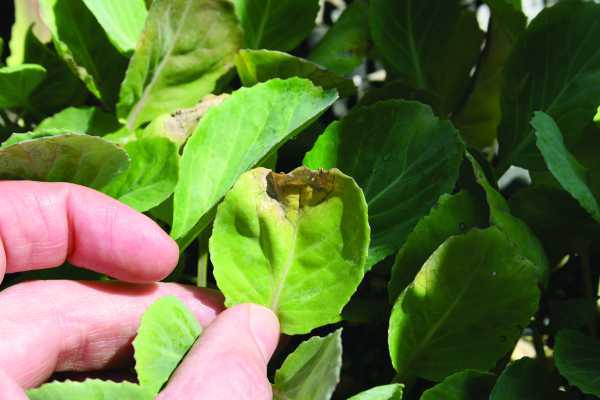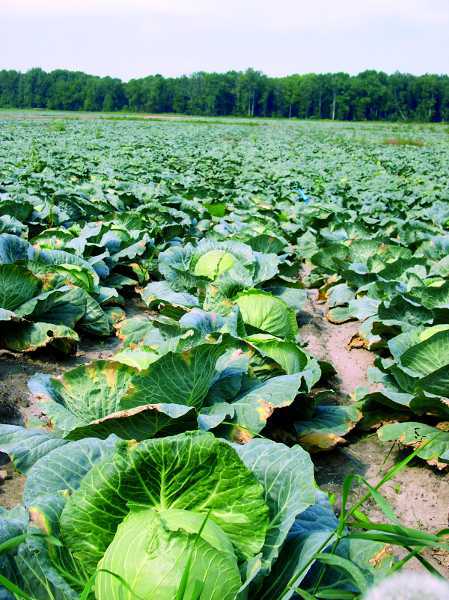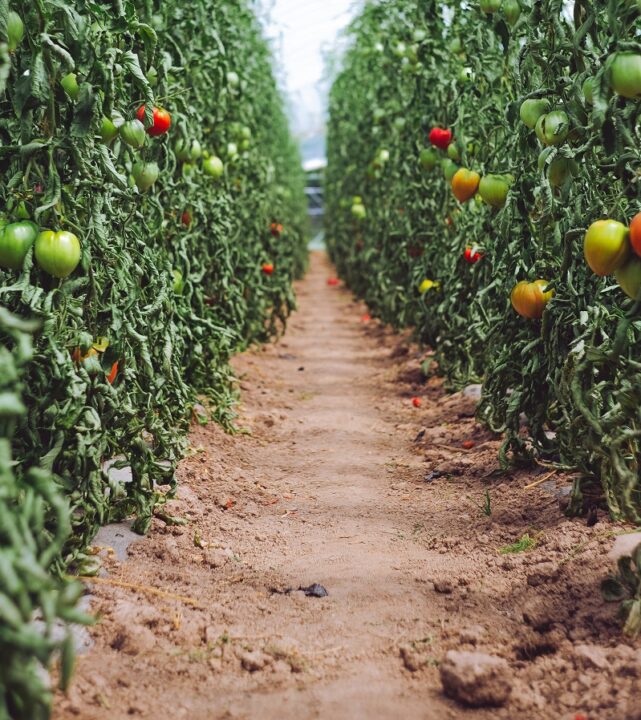Understanding Black Rot In Cole Crops
Black rot is a significant disease of cabbage and other crucifer crops worldwide. The pathogen spreads through infected seeds or plant-to-plant through water droplets. It can be distributed rapidly among greenhouse transplants and in seed beds.

The black rot pathogen spreads through infected seeds or plant-to-plant through water droplets. It can be distributed rapidly among greenhouse transplants, as shown here.
The disease can also spread from weeds and debris in the soil. The role of weeds and soil debris as a source of the pathogen was previously unknown.
The goal of a project at Cornell University using DNA fingerprinting to identify strains of the black rot pathogen was to gain a better understanding of the potential sources of inoculum in New York and the severity of disease from different sources. The information gleaned will allow the development of management strategies to control the disease.
Since 2004, Cornell researchers have annually surveyed black rot pathogen isolates from transplants and symptomatic plants in commercial fields using selective media, ELISA (enzyme-linked immunosorbent assay), pathogenicity, and DNA fingerprinting. The studies have shown that while it is possible for the pathogen to overwinter in New York, this has not been the most common source of inoculum.
Fingerprinting results identified new strains of black rot that have been in New York each year of the study (2004-2013), and the new strains are the predominant strains each season.
The Role Of Weeds
To better understand the role of weeds as a source of inoculum, in the spring, weed samples were collected from five fields that had severe black rot the previous fall. From each field, 15 to 20 weed samples were collected, and attempts were made to isolate the pathogen. The pathogen was isolated (based on molecular data) only from cruciferous weeds; however, none of the bacteria isolated produced symptoms on cabbage plants when inoculated in a greenhouse assay.
Additionally, the DNA fingerprint patterns of the isolates obtained from weeds did not match any of the DNA fingerprint patterns from isolates acquired from cole crops. This means the isolates collected from weeds did not come from the severely infected cabbage plants that were in the same field the previous year.
In two or three instances, researchers isolated the pathogen from weeds in fields during a black rot epidemic, with the symptomatic cruciferous weeds growing next to the infected cabbage. In these cases, the isolates in the weeds were identical to those in the cabbage plants, based on DNA fingerprinting.
It is impossible to know if the pathogen moved from the cabbage to the weed, or from the weed to the cabbage. The researchers’ hypothesis is that the pathogen moved from the cabbage to the weed.
They reached that hypothesis because in each case the isolate had not been observed in New York, and they identified the identical isolate from cabbage in other geographically separated fields. Thus, while strains of black rot that cause disease in cole crops can be harbored and detected in weeds in New York, this is not the predominant source of inoculum.

Photo Credit: Chris Smart
New Pathogen Strains
Based on the fingerprint studies, it is known that new strains of black rot arrive each year. The pathogen then spreads during transplant production and in the field. With this information, researchers began studies with the goal of determining the efficacy of available control strategies.
Experiments have been conducted to determine if applications of copper during transplant production will reduce the spread of the pathogen in the greenhouse and lead to less disease in the field. The treatments were continued into the field to determine if there was an impact on yield.
Results of a three-year study indicate that application of copper during transplant production does reduce the spread of black rot. Application of Actigard (Syngenta), a plant activator, also reduced spread of black rot, but some cupping of leaves was observed.
Control With Copper
A trial in 2013 compared copper-based control products for efficacy against black rot under field conditions. Healthy transplants were planted in a randomized complete block design. Treatments were sprayed on a seven-day schedule until just prior to harvest, and plants were inoculated with the pathogen 24 hours after the first spray.
Disease incidence and severity were rated four times. No phytotoxicity was noted with any of the treatments. Black rot symptoms were first observed in early July and by the first rating on July 10, 100% of the untreated plants showed black rot symptoms.
The wet and cool environmental conditions during June and early July of last year were not optimal for the spread of black rot, and while the number of plants with black rot symptoms was high, the severity was fairly low.
At the last rating, black rot lesions covered 39% of the inoculated but untreated (no copper) plants. The un-inoculated plants with no treatment had a severity rating of only 4% by late July, but 100% of them had symptoms of black rot. All of the treatments (Kocide 3000, DuPont Crop Protection; Champ WG, Nufarm Agricultural Products; Cueva, Certis U.S.A.; and Cuprofix Ultra 40 Disperss, United Phosphorus, Inc.) on the inoculated plants significantly reduced the severity of the black rot at the final rating.
Additionally, the Kocide and Cuprofix treatments had significantly less black rot than the Cueva treatment; however, this was a lower rate of Cueva than had been tested in 2012 when no significant differences were seen between Cueva and Kocide.









